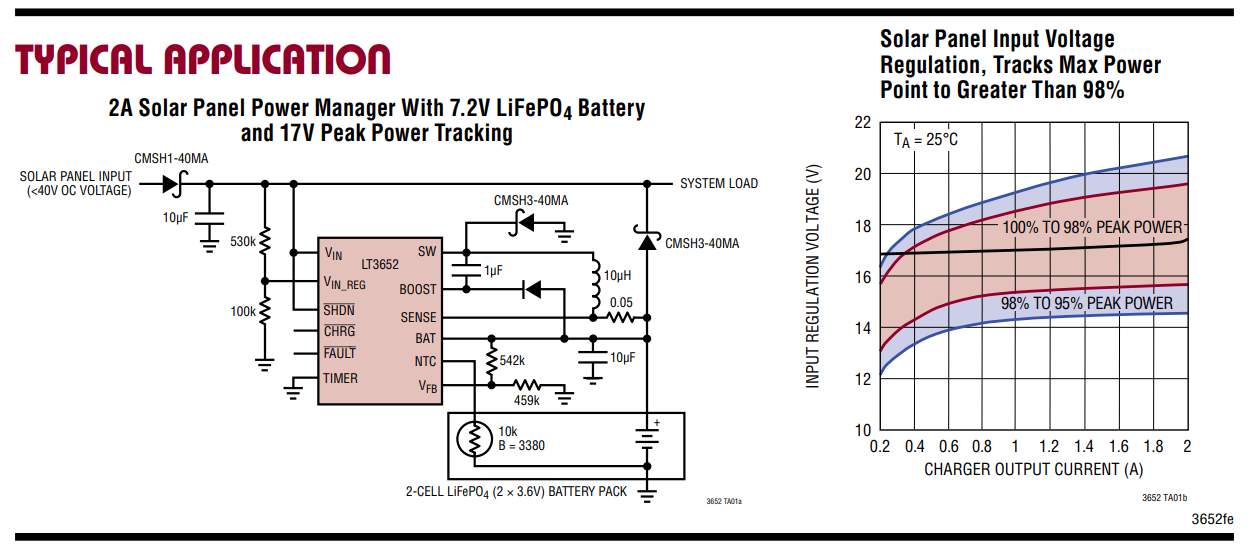I am designing a solar charger with MPPT for a 1-cell lithium polymer battery of approximately 6000 mAh. The solar panel is 10W and 21 Voc.
I am trying to ensure that the charger has protection against reverse voltage for both the solar panel and the battery.
My questions are focused on the protection of the battery against reverse voltage, not on the design of the charger itself. The complete scheme can be seen below.
The battery protection circuit is extracted from this Analog Devices document but with some modifications.
In summary, the operation is as follows:
Q2 and Q3 provide a reverse voltage detection circuit and Q4 is the one who disables the battery. If the battery polarity is correct, Q2 and Q3 are cut-off and therefore, Q4 connects the battery. In the event that the battery is connected in reverse, Q2 and Q3 are activated and then shunt the gate of Q4 to ground, causing Q4 to break and the battery is disabled. Do you see any fault or something that can be improved?
Datasheets:
- Q2 DMN3023L-7
- Q3 DMP3099L-7
- Q4 PSMN9R8-30MLC
Thanks and best regards.



